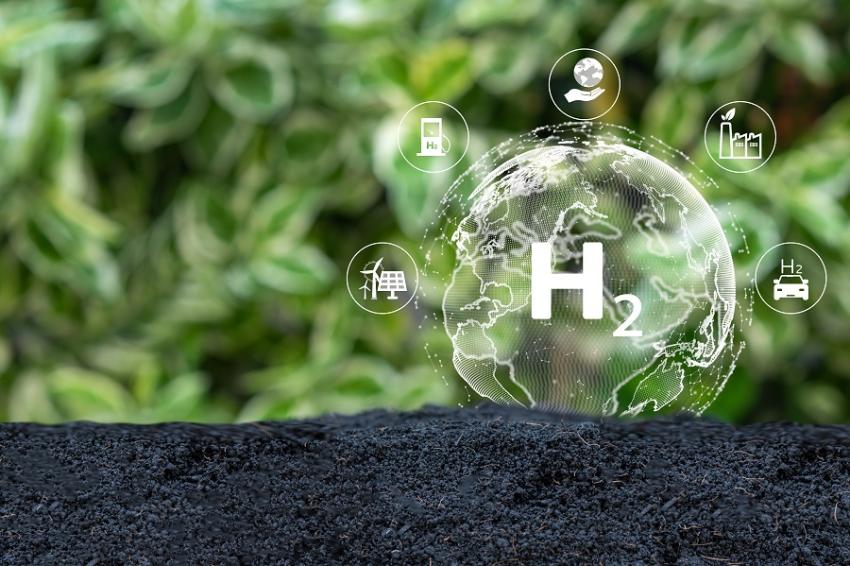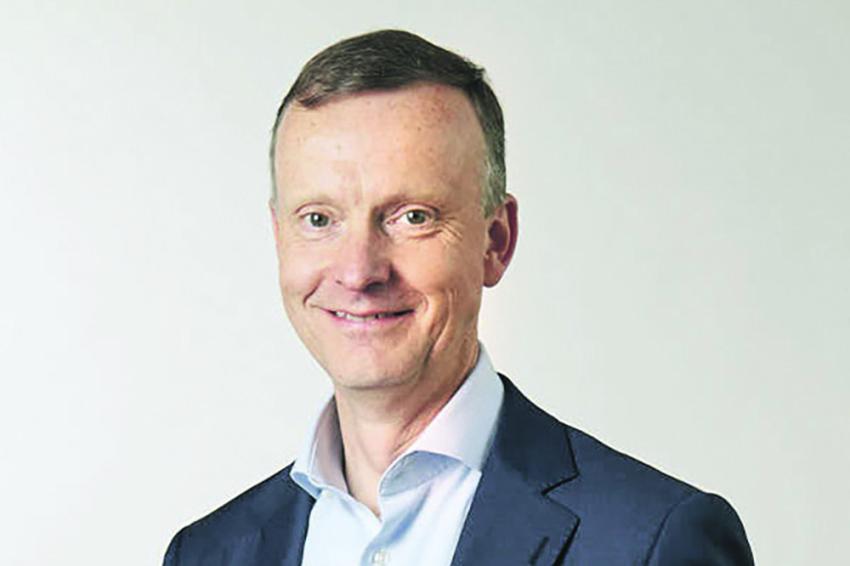Johnson Matthey Set to Catalyze the Net Zero Transition
Catalyst for a Sustainable Planet: Interview with Maurits van Tol, CTO, Johnson Matthey
CHEManager: Johnson Matthey, like many other chemical companies, calls itself a global leader in sustainable technologies. What characterizes a leader in sustainable technologies, especially in the chemical industry?
Maurits van Tol: JM does not produce bulk chemicals or fuels; it develops catalysts and engineering solutions for its customers. 40% of all chemicals are produced through syngas, an optimized mixture of CO and hydrogen. JM is the number one licensor of syngas related technologies, enabling us to help our customers transition from fossil-based feedstocks to alternative feedstocks that have much lower greenhouse gas emissions.
JM is also the number one licensor of hydrogen production technologies. Traditionally for hydrogen from natural gas, but now extended to a combination with CO2 capture for use or storage: our LCH technology. JM also has a long history in fuel cells — from providing the platinum to the inventor of the fuel cell in 1842 and manufacturing components for the Apollo missions to the moon, to fuel cell component development for static and mobile applications converting methanol or hydrogen into electricity. This know-how is applied to the development and production of the reverse process: electrolysis of water to produce hydrogen and oxygen. JM and its partners, like Plug Power, are again leading the industry. It is also worth remembering that JM has the broadest catalyst portfolio in the world, spanning heterogeneous and homogeneous catalysts, enzymes, and biocatalysts.
Catalysts lower the amount of energy that is required to produce products and if tailored well they do so also with a high selectivity, saving raw materials, solvents, and energy at the separation and purification steps in chemicals, life sciences and pharmaceutical products. In my opinion a leader also thinks about how to reduce the physical footprint of plants, as smaller plants need less concrete and steel. This is what we applied extensively in our LCH plant design, nearly halving the footprint and a 40% lower capex.
The chemical industry, by its own right, is a major originator of greenhouse gas emissions and has embarked on a path toward carbon neutrality. What will be instrumental measures for chemical companies to reduce their own emissions?
M. van Tol: At JM, it starts with designing energy efficient plants for our customers. Our customers can then select low carbon emitting energy sources to provide the remaining energy demand. Customers also approach us to help them retrofit their CO2-emitting hydrogen plants with carbon capture.
“... it starts with designing energy efficient plants for our customers”
Visionary chemical companies help technology providers scale-up their sustainable technologies, through pilots and large global contracts that help the value chain to “design once, build many”, bringing efficiency through scale. Based on a long history of platinum group metals — PGMs — recycling, we help our catalyst customers by ensuring circularity is taken into account at the beginning of our innovation process. JM is the largest secondary refiner of PGMs in the world.
As the key enabler of technological progress in other industrial sectors, the chemical industry is critical for reaching the overall goal of carbon neutrality. In your key markets automotive, chemicals, and energy, what have been recent milestone developments to support this goal?
“Sustainable methanol and ammonia, made through fossil-free syngas, can be used as hydrogen carriers.”
M. van Tol: In the chemicals space, our role in helping the global syngas chains reach net-zero is very strong. Next to that we have technology that helps to ship hydrogen around the world, for example in the form of methanol — JM being the number one licensor of methanol technology — or ammonia. Sustainable methanol and ammonia, made through fossil-free syngas, can be used as hydrogen carriers. On sites that produce hydrogen this can be converted into methanol or ammonia, then shipped where they can be converted, releasing hydrogen. We provide catalysts in this area, for example. Both methanol and ammonia can be used directly as chemical and as fuel. In the latter case our catalytic converters are applied to reduce emissions, building on our great heritage in the automotive industry.
“In the chemicals space, our role in helping the global syngas chains reach net-zero is very strong.”
In the automotive space, our fuel cells contribute to decarbonization, and we have invested heavily in a new gigafactory at our site in Royston, UK, to scale up the production of hydrogen fuel cell components. In January, we announced a long-term strategic partnership with Plug Power, a leading provider of turnkey hydrogen solutions for the global green hydrogen economy, to co-invest in what is expected to be the largest — 5 Gigawatt scaling to 10 Gigawatt over time — CCM manufacturing facility in the world which will be built in the US.
In the energy space our award-winning Fischer-Tropsch CANS technology, developed with BP, allows our customers, like Fulcrum, to use municipal solid waste and landfill as a feedstock to produce synthetic crude oil for clean transportation fuels. Repsol and Aramco are going to convert carbon dioxide and electrolytic hydrogen into aviation fuel, and together with Virent we have a technology that converts biomass into aviation fuel or aromatics that can be used in the chemical industry.
For the chemical and energy industries, the two pillars of decarbonization are carbon replacement and carbon reduction. For chemicals and materials manufacturers, it will be critical to transform the feedstock base of their value chains. Which technologies does JM offer to support other chemical companies?
M. van Tol: Our reverse water-gas shift technology enables our customers to convert carbon dioxide into synthesis gas. The technology that JM developed with Virent for the production of sustainable aviation fuel can also be used to produce aromatics for the chemicals, materials and pharma industries. We have our broad portfolio of hydrogen production technologies, including through an investment in Enapter, leaders in AEM electrolysis technology.
JM offers other technologies to support sustainability in many value chains based on syngas. Which technologies can be used in downstream processing of syngas to produce fuels or other value-added chemicals?
M. van Tol: An important technology that allows syngas conversion into a variety of fuels is our Fischer-Tropsch CANS technology that we developed with BP. And when using syngas produced from renewable sources — electrolytic hydrogen and renewable or waste sources of carbon — our customers produce ‘renewable’ or e-methanol or ammonia. The opportunities through syngas are basically endless.
The circular economy is indispensable to reach carbon neutrality. As a leading producer of catalysts and other chemical compounds, how do you manage closed loops for the materials needed?
M. van Tol: JM has a long history in PGM recycling. We know how to source materials ethically and sustainably through the value chains. We have an established closed loop in a broad range of sectors, such as pharmaceuticals and nitric acid, and we do the same for our fuel cell and electrolyzer customers.
As the world’s largest secondary refiner of PGMs, we have the network, knowledge, and scale. In the innovation process we take design for end-of-life solutions very seriously, from the beginning. Reduce, re-use, recycle are key words in our innovation process. We are actively researching a more sustainable route to recycle fuel cells and electrolyzers.
What is your strategic approach to innovation and how is technology R&D organized and managed at JM? How much investment is dedicated to innovation?
M. van Tol: At JM, we translate our company strategy into an innovation and R&D strategy, using technology road mapping approaches. This includes workshops and cross functional discussions to develop business and topic roadmaps across our organization. The roadmaps help link technology resources to business objectives by pulling together information on markets and customer drivers, product development plans and technology investment areas to help prioritize R&D objectives.
Our innovation portfolio covers all our innovation efforts, and the global leadership team ensures that our capital allocation, our resources, are aligned with this portfolio and that the portfolio allows us to play a leading role on the global stage in areas core to the company.
The CTO is accountable for the overall innovation delivery, but I do that with a fantastic team of R&D units across the business and innovation directors that work seamlessly together to ensure we are successful. This joint team represents about 1,600 colleagues in R&D, innovation, technology development and scale-up, in which we invest about €230 million.







